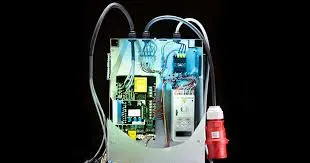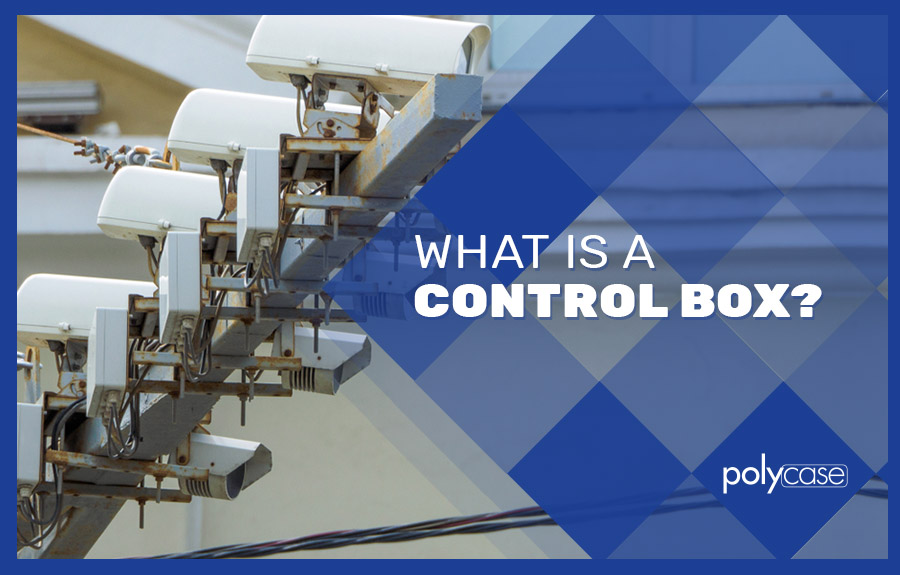
What’s a light without a light switch, or a TV without a remote? Using technology safely and effectively means having the ability to control it. When it comes to more heavy-duty equipment, the electronics are typically consolidated in one place: the control box.
Creating a high-performance control box means knowing the ins and outs of what you need for your specific application, as well as general best practices of control box design. In this article, we’ll discuss the many types of control boxes used in applications across industries.
However, before we jump in, let’s establish a basic standard of what a control box is and what most people expect from a control box, as well as a quick review of the fundamentals of control box design. These topics will give you grounding in key concepts as you explore the best way to build and design your control box.
Basics of a Control Box
Because control boxes are used for so many different types of equipment, it can be hard to create a basic definition of what they are—but there are definitely some common features. A basic breakdown of the key functions and components of an electrical control box includes:

- A control box provides the physical interface to allow an operator to control a piece of equipment and monitor its performance.
- Control boxes typically contain a variety of instruments such as switches, knobs, sliders and buttons. These are connected to the equipment and are used to control it, allowing operators to start, stop or adjust various functions.
- Control boxes also often contain instruments that provide data from sensors. The data is used to ensure that the machine is functioning correctly and allows operators to make control decisions or to create rules and procedures using automation.
- The actual connections from the controls to the equipment usually consist of relays, timers and programmable logic controllers (PLCs).
- Controls are typically located inside electrical enclosures to prevent accidental contact, unauthorized access or damage to the controls.
- Many newer control box models also use touch screens to provide operators with intuitive and fine-tuned control over the processes they work with.
You’ll find control boxes in nearly every industry around the world, from the boxes that control heavy industrial equipment to DIY project boxes. Each type of control box has its own requirements and idiosyncrasies, and each demands careful attention to best practices of design.
General Tips for Electrical Control Box Design
No matter what kind of control box you’re designing, it’s important to follow the established best practices of control box design . Some of the core principles of designing a great control box are as follows:
- Create robust drawings of both the physical layout and the schematic, ensuring they match before proceeding further.
- Ensure that you’re familiar with National Electric Code (NEC) and Underwriters Laboratories (UL) standards for clearance on heat-producing components.
- When choosing your control components, remember that the best control boxes use the simplest control component appropriate for the application, so start simple and work your way up. You don’t need to use a PLC where a simpler (and less expensive) component will do the job.
- Apply the same principle to your operator device type. A flashy human-machine interface (HMI) may look impressive—but a push button interface that performs the same functions is usually cheaper, has a lower learning curve and is easier to access in an emergency.
- Whenever possible, use the best-in-class products in their category. An electrical control panel operates the nerve centers of your equipment, so consider the components to be a long-term investment in the health and safety of your equipment and your employees.
- Remember that electrical control panels also need mounting hardware to keep everything in place. For example, DIN rails are a common must-have when you’re mounting terminal blocks inside an electrical enclosure.

You can also find many more in-depth studies of what makes a good control box online. They’ll help you get a good idea of how to design component spacing, wireways and more. Next up, we’ll take a look at what some of the different types of control boxes look like and how they function.
Industrial Hydraulic Electrical Control Boxes
Hydraulic control boxes are another type of control device you’ll frequently encounter in heavy industry. These devices control the pressure of hydraulic fluid throughout a system and are used in contexts from construction equipment to manufacturing floors to agricultural applications such as automatic hay balers .
The most basic function of a hydraulic pump is to control the movement of pressurized hydraulic fluid. Typically, this fluid is pressurized by a motor, pumped out of a reservoir and travels through bidirectional valves, creating pressure and controlling the movement of hydraulic-powered machinery.

The electrical control box is the “nerve center” that helps coordinate and monitor all of these functions. A hydraulic control panel often includes automation equipment such as programmable logic controllers that monitor inputs and control outputs according to programmed rules.
Since many hydraulic control panels are used on active (often outdoor) job sites, these control boxes often have to be built a little tougher than others. You might need an enclosure that’s weatherproof, corrosion-resistant, impact-resistant or all of the above. Sensor lights for troubleshooting are also especially useful in hydraulic control boxes, helping users to pinpoint a system error in these often-complex networks of valves, cylinders and hoses.
Well Pump Electrical Control Boxes
The well pumps that provide water to private well systems are another area in which you’ll frequently find control boxes. Typically, these designs are relatively simple—but, like all control boxes, they serve a critically important purpose.
The main job of a well pump’s electrical control box is to cycle the pump’s pressure switch on and off. In a private well system, the pump draws up water from the groundwater supply and pumps it into a pressure tank. The pressurization that occurs inside the tank provides the force that gives a building running water. When the pressure in the tank drops below a certain level, the pump cycles on and then cycles back off when the tank is at an acceptable level.
Thus, the well pump control box sits at the nexus of the entire system and powers its most important functions. Most people who need a well pump control box will buy one that’s designed to work with the specific type of pump they’re using, since the components are designed to work together at the correct voltage levels and are easier to service.
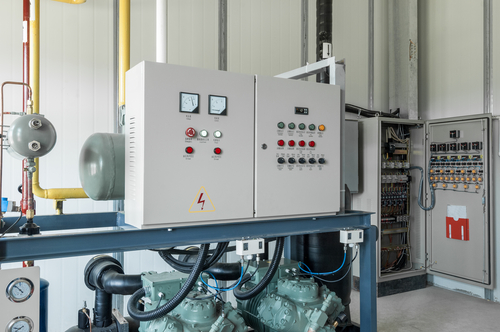
However, if you do intend to build your own well pump control box, make sure you’ve got well pump wiring diagrams on hand, as well as the technical specs of the pump you’re using. It’s common to install a well pump control device in an outdoor electrical box , and if that’s part of your plan, make sure to invest in an outdoor enclosure .
Single Phase Start Control Box
Lighting and A/V Electrical Control Boxes
The use of electronic enclosures for control boxes isn’t limited to industrial applications. Outdoor consumer electronics are more popular than ever, with many homeowners installing large and complex lighting and entertainment systems that turn any patio into a movie theater or dance floor. Naturally, this raises the problem of designing electronics that stand up to the elements.
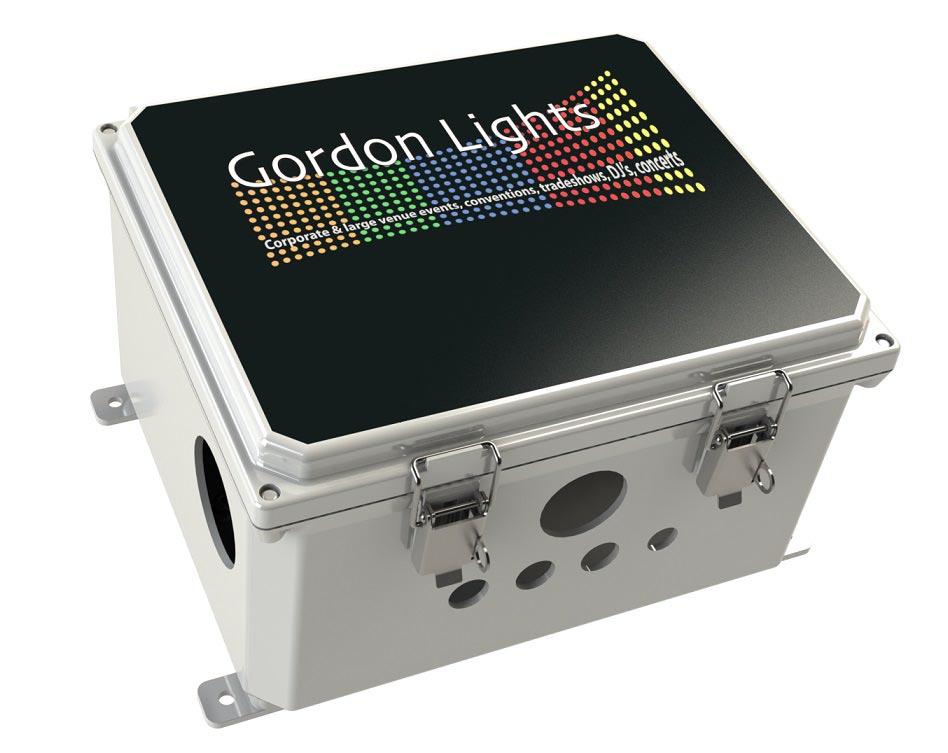
Motor Control Enclosure for Lighting Display
Many factors have to be considered in designing outdoor consumer electronics, and that’s particularly true of their control boxes. The needs of the control systems for these devices can include some or all of the following:
- Housed in a weatherproof electrical enclosure that will withstand wind, rain, sun, and possibly snow. (A NEMA 3 enclosure or higher is typically recommended.)
- Housed in an enclosure that allows for transmission of WiFi and/or Bluetooth signals without interference.
- Modular designs that, whenever possible, allow new devices to be added without extensive changes to the rest of the system.
- Ability to program “scenes” that give homeowners access to a variety of preset combinations with the push of a button.
- Integration with home security systems.
Circuit Breakers and Other Electrical Control Panels
Electrical control panel equipment like circuit breakers and switchgear is another common application for electrical control boxes. A breaker box needs to resist environmental conditions that might damage the sensitive electrical equipment inside.
Metal enclosure boxes are the standard choice for circuit breakers. That’s because a conductive metal box is necessary for grounding the control panel. In case of a malfunction of contactors or other electrical equipment in the panel, the fault current can be discharged harmlessly into the ground, avoiding potential damage and injuries.
In larger electrical systems, where a main circuit breaker might control several sub-panels, it’s important to choose high quality electrical enclosures for all junction boxes in the system. It’s also crucial to check the NEMA and IP ratings of a breaker box, particularly if it’s being installed as part of an outdoor electrical system.
Bonus Round: Bike Connect
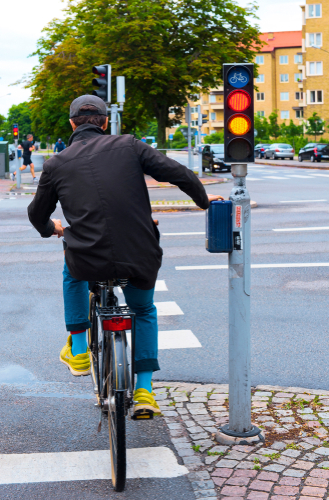
Hobbyists and DIY tech enthusiasts often need to build control boxes for their projects as well. For a different perspective on what a control box can do, take a look at Bike Connect , a fascinating technology developed by bike enthusiasts in Portland, OR. This cool technology promises to smooth traffic flows that can be hostile to cyclists by using control boxes mounted on stop lights.
At the heart of the problem is that even in highly bike-friendly cities like Portland, stop lights aren’t timed for the speed or cadence of the average person riding a bike. That can create unpleasant situations in traffic and even danger for cyclists—so the creators of Bike Connect set out to do something about it.
The control box has two main components: A specialized device that interfaces with the stop light and a sensor that detects signals from the smartphone of an approaching cyclist who has the Bike Connect app. As the cyclist rolls up to the light, the app and the sensor talk to each other, turning the light green more quickly. According to its designers, it can be put together at home with a soldering iron and $200 in parts—although that doesn’t mean that you should try to install one on a neighborhood stop light without permission and assistance from city engineers.
Bike Connect is still in development, and its creators are working on adding features that will allow cyclists to use it without looking at their phones. (And, we have to ask—what’s stopping someone in a car from using this?) But it’s a great example of what some crafty technology geeks can do with a few wires, capacitors and a durable outdoor electronics enclosure.
-
Self Amalgamating Tape: Redefining Electrical Insulation and ProtectionNewsAug.07,2025
-
Seal Strip Solutions: Revolutionizing Energy Efficiency and Comfort in Modern BuildingsNewsAug.07,2025
-
High Voltage Electrical Tape: Powering Safety and Reliability in Modern InstallationsNewsAug.07,2025
-
Flex Tape Waterproof: Transforming the Future of Instant RepairsNewsAug.07,2025
-
Elevate Electrical Safety Standards with High-Performance PVC Electrical TapeNewsAug.07,2025
-
Butyl Rubber Tape: The Ultimate Solution for Reliable Sealing and WaterproofingNewsAug.07,2025

